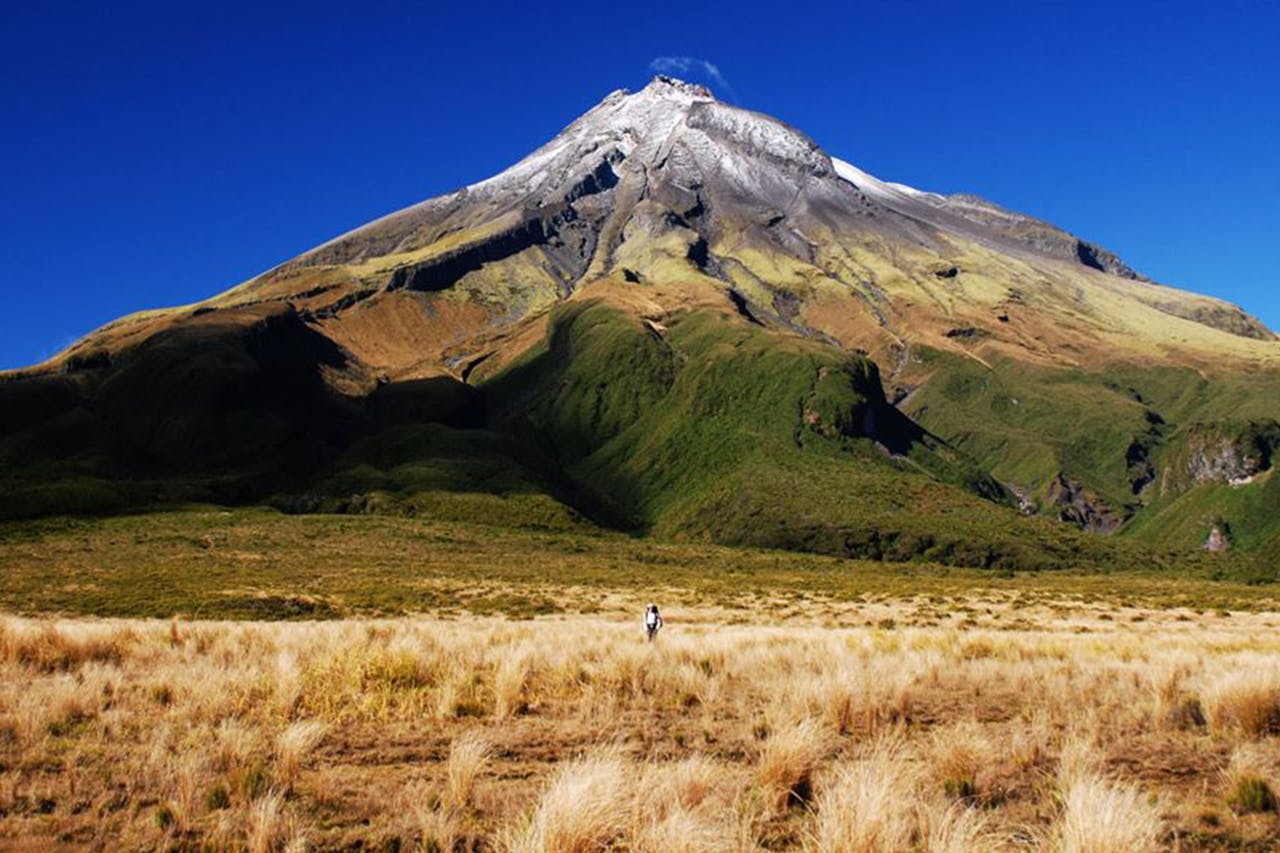A wrap of the biggest stories and best writing about the outdoors from New Zealand and around the world.
Work on the Taranaki Crossing recommences this month between Pouakai Hut and Manganui.
“This phase of work will result in 95 per cent of the tracks forming the Taranaki Crossing being upgraded,” project manager Carl Whittleston said.
“Eroding, meandering and uneven sections of the track will be addressed to reduce environmental and cultural impact on the maunga. We will be focused on improving the condition of track and drainage, and enhancing the resilience of the track long-term.”
The upgrades consist of five sections of track, all of which are expected to be completed in May 2022.
The completed track will offer a heightened protection of the maunga biodiversity and increased safety on the route.
Read more here.
Gravel to go on forgotten highway
The first sod has been turned on a project that will see the final 12km of Forgotten World Highway sealed, RNZ reports.
The section, which runs through Tangarakau Gorge, will be the final phase in the project to seal SH43, the famous route connecting Stratford in Taranaki to Taumarunui.
The highway provides an alternative scenic route between Tongariro National Park and Te Papakura o Taranaki.
Stratford Mayor Neil Volzke said the project is “hugely significant”.
“It’s been something successive mayors and councils have been asking for for at least 50 years, so to reach the milestone of the sod-turning it’s tremendous,” he said.
“It opens up a lot of opportunities because with the road sealed, eventually that will clear the way for visitors with hire vehicles and campervans, both of whom are reluctant to use the road in its present state.”
Traffic is estimated to grow by 15 per cent when the project is completed in early 2024, which may boost Taranaki’s tourism economy by as much as $45 million annually.
Ōparara Basin unveils new viewing platform
Visitors to Ōparara Basin on the West Coast can now enjoy the reflections in Mirror Tarn from a newly completed viewing platform.
“Not only will the platform give visitors a wider view of the picturesque tarn, it will also ensure better protection of the tarn edge from visitors’ feet,” DOC’s Suvi van Smit said..
“The track to the tarn has also been extended, limestone steps have been built to improve access and safety to Moria Gate, the Ōparara Arch track surface has been improved, Box Canyon carpark now has a flush toilet, and new video surveillance equipment has gone in to monitor the restricted access area around the Honeycomb Caves.”
The improvements were made possible by a $5.7 million boost from the Provincial Growth Fund.
Climate change doco premieres at COP26
A documentary calling to save the world’s mountains has premiered at COP26.
The film, Sustainable Summits: Climate Solutions from the Top of the World, explores the impacts of climate change on livelihoods, and has been endorsed by ex-New Zealand prime minister Helen Clark, mountaineer Reinhold Messner and the New Zealand Alpine Club.
Set in the Hindu Kush Himalayas, the documentary focuses on how highland residents and mountain lovers are working to find solutions to tackle the climate crisis.
New Zealander and Kathmandu resident Lisa Choegyal, who produced the film, said it highlights some proven solutions to mitigate climate change.
“If we work together now, sharing their local and regional responses, there is still time to pull back from the brink,” she said.
Watch the video here.
Beavers flood Appalachian Trail
A mile of the Appalachian Trail has flooded, with the unlikely culprits being a family of rodents.
The section of trail in Massachusetts was underwater this season due to a beaver dam rerouting a nearby brook.
Heavier than usual rains had caused the family of beavers to move their home closer to the trail, and hikers have been advised to walk around the section for the time being.
“We expect this water to recede shortly and for the beaver family to move back to their original homes,” the Appalachian Trail Conservancy wrote.
Read the full story here.
Skeletal remains solve Rocky Mountain mystery
A 38-year-old mystery has been solved in the Rocky Mountain National Park.
Skeletal remains were found near Skeleton Canyon, and officials believe they belong to 27-year-old hiker Rudi Moder, who disappeared in the area in 1983.
Moder left the Zimmerman Lake Trailhead for a two to three night ski mountaineering trip, and was reported overdue by his roommate six days later.
Search and rescue efforts were hampered by a dumping of fresh snow, though the teams did find Moder’s food cache, gear, and a snow cave.
Later searches came up empty, but in August 2020 a hiker discovered remains.
An investigation was conducted, but resources had to be redeployed to fight a fire in the park.
Officials resumed their search this summer, and found ski equipment and personal items believed to belong to Moder.
With assistance from the FBI, they also recovered remains, which were sent to Germany for positive identification.
Read the full story here.







